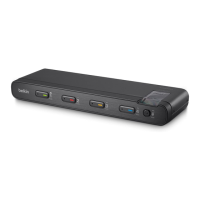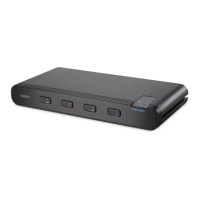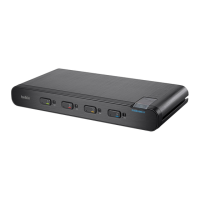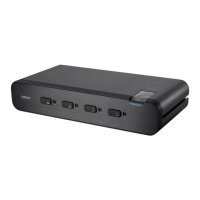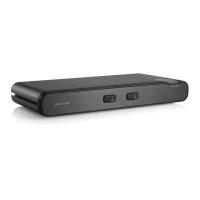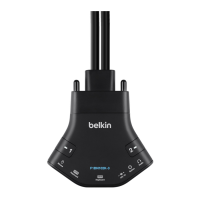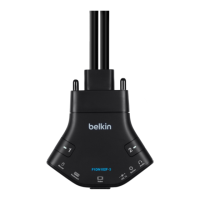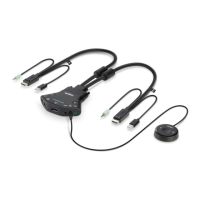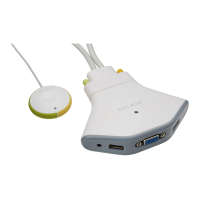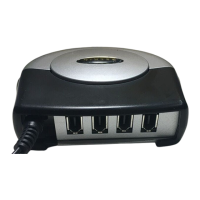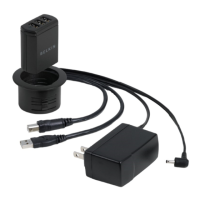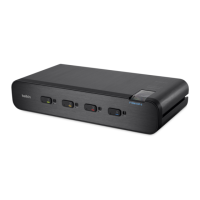
Do you have a question about the Belkin F1DN104E-3 and is the answer not in the manual?
| Audio connections | Yes |
|---|---|
| Headphone outputs | 1 |
| USB connector type | USB Type-A, USB Type-B |
| Number of computers controlled | 4 |
| Built-in display | No |
| Output current | 1.5 A |
| Output voltage | 12 V |
| AC input frequency | 50 - 60 Hz |
| Storage temperature (T-T) | -20 - 60 °C |
| Operating temperature (T-T) | 0 - 40 °C |
| Operating relative humidity (H-H) | 0 - 80 % |
| Maximum resolution | 3840 x 2160 pixels |
| Number of displays supported | 2 |
| Cables included | AC |
| Product color | Black |
| Rack mounting | - |
| LED indicators | Status |
| Sustainability certificates | CE, Federal Communications Commission (FCC), RoHS |
| Depth | 157 mm |
|---|---|
| Width | 320 mm |
| Height | 44 mm |
| Weight | 2140 g |
Lists the items included in the product package for initial setup.
Lists important safety guidelines to follow when using the product.
Provides essential guidance and precautions for operating the KVM switch.
Details the advanced security features of the KVM switch.
Explains the unidirectional data flow architecture for enhanced security.
Describes how power domains are isolated to prevent signaling attacks.
Covers secure access and logging for administrative control.
Explains the active anti-tamper system and its functions.
Details the use and importance of tamper-evident labels.
Describes how the switch detects and handles USB devices.
Summarizes other notable features of the KVM switch.
Details the compatibility and functionality of USB support.
Explains the support for DVI-I video signals.
Covers support for dual-link and dual-display DVI video.
Describes the audio sharing capabilities.
Explains port coloring and naming labels for user identification.
Explains the function of LED indicators on the device.
Describes the integrated mounting system for installation.
Lists the necessary equipment and cables for the KVM switch.
Outlines the operating systems compatible with the KVM switch.
Describes USB keyboard/mouse ports and switchability.
Describes the PS/2 console ports for keyboard and mouse.
Details the console video port compatibility with displays.
Explains the support for Common Access Card (CAC) readers.
Illustrates the front view of the KVM switch with labeled components.
Illustrates the back view of the KVM switch with labeled ports and components.
Provides detailed technical specifications of the KVM switch.
Covers pre-configuration steps and placement considerations for the switch.
Instructions for connecting the console (keyboard, mouse, monitor) to the switch.
Steps for powering up the KVM switch and initial checks.
Instructions for connecting the computers to the KVM switch.
Steps for powering up the connected computers.
Guide on installing color chips and port name labels for identification.
Explains the self-test procedure performed by the product on power-up.
Guide on how to select and switch between connected computers.
Details the configuration and operation of CAC readers with the switch.
Instructions for installing the CAC connection.
Advice on what to do if the tamper-evident seal is compromised.
Specifies the maximum cable length allowed between the switch and computers.
Clarifies whether any software installation is required for the switch.
Addresses compatibility with computers lacking USB support.
Confirms the requirement for an AC adapter for the switch.
Details the compatibility of the switch with Linux operating systems.
Lists compatible computer systems and peripherals.
General troubleshooting tips for product inoperability or self-test failure.
Solutions for when computers do not boot correctly through the switch.
Troubleshooting for video issues like ghosting, shadowing, or fuzzy images.
Offers solutions for a black screen issue on the monitor.
Explains how to troubleshoot a blinking display diagnostic LED.
Troubleshooting steps for keyboard detection or functionality issues.
Explains keyboard lock lights and how to verify state.
Troubleshooting steps for mouse detection or functionality issues.
Covers FCC, CE, ICES, and Australian declarations of conformity.
Outlines the 3-year warranty coverage, exclusions, and correction procedures.
Provides instructions on how to obtain service for the Belkin product.
Explains how state laws may affect the warranty terms.
Provides specific warranty information for Australian consumers.
Instructions on how to report potential security vulnerabilities in Belkin products.

